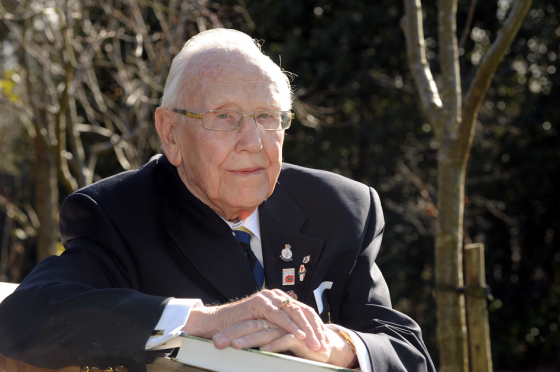A north-east veteran who survived an atomic bomb blast and was forced to work on the Death Railway by the Japanese army has died at the age of 97.
Alistair Urquhart, who was born in Aberdeen on September 8, 1919, was a renowned war hero who miraculously lived through a series of horrific ordeals in the far east during World War II.
At 19 years old, he was conscripted to the Gordon Highlanders and stationed at Fort Canning in Singapore, whereupon he endured a series of horrific experiences.
In 1942, he was captured by the Imperial Japanese Army, and forced to march more than 100 miles through the sweltering jungle to work on the infamous Burma Railway.
As part of his daily life as a prisoner of war, Mr Urquhart faced severe beatings and was tortured for stepping out of line.
Speaking about his experiences, Mr Urquhart previously said: “They would give us a cup of rice in the morning – about the size of a small tea cup – and one to take with us when we went to work on the railway.
“But, by the time you got to lunchtime the rice had fermented. The conditions were as bad as they could possibly be.
“It couldn’t have been any worse. There were continual punishment beatings.
“For anything serious, they made you go out in the sun and stand holding a huge rock above your head – if it fell, you were beaten.”
Two years later, the north-east soldier was being transported on a Japanese ship with 900 other men when it was torpedoed by an American submarine.
But after miraculously surviving the sinking, Mr Urquhart faced five days of floating on a raft before being picked up by a passing Japanese whaling vessel and back into the hands of the enemy.
That wasn’t the end of his travails. Almost immediately, the young Scot was sent to work in Nagasaki at an open cast coal mine, where he was blown off his feet and exposed to crippling nuclear fallout from America’s second atom bomb strike in 1945.
When he finally returned home, he lived happily in Broughty Ferry for many years, and, in 2010, shared his remarkable life story in his book The Forgotten Highlander.
He died at his care home in Dundee on Friday, surrounded by his family.










